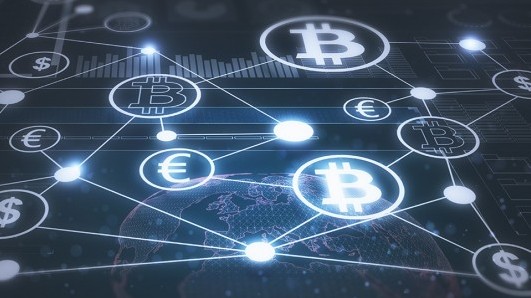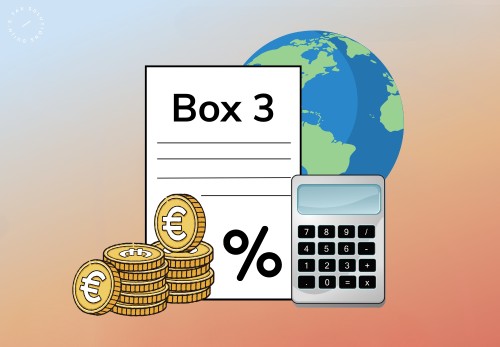What is DeFi?
DeFi fundamentally changes the situation. Unlike classical finance, in which banks and other institutions are designated as arbitrators, DeFi eliminates arbitrators. It is a concept built into blockchain technology in which economic services such as financing, takeover, trading and investment are governed by smart contracts - self-executing contracts whose requirements are written directly into the code.
DeFi has its roots in Bitcoin, the main dispersed line of digital currencies. However, it was only after the launch of Ethereum in 2015 that the real possibilities of DeFi began to open up.
The Ethereum platform gave creators the opportunity to form distributed add-ons (DApps), which had the ability to automate complex economic activities. Since then, these DApps have evolved into a wide range of services, from dispersed exchanges (DEX) to plastic platforms, all of which operate without exception in the absence of a main body.
Smart contracts, DApps and the blockchain itself are considered to be the main elements of DeFi. Smart contracts - this is the basis that ensures the implementation of contracts in the absence of human intervention.
DApps are user devices that interact with these contracts, providing services similar to those you can find in the classical banking process, but without the classical barriers. And blockchain, in particular Ethereum, presents itself as a non-threatening, colorless ledger, in which all the impact data is fixed without exception.
DeFi opens the door, providing economic services in the absence of the need to possess a result, a plastic situation or including the act confirming the person. This is besides the most direct - everyone is able to control the cipher of DeFi business projects, something that is very much from the impenetrable practice of classical banks. In addition, DeFi functions constantly and in the absence of exits, offering a degree of availability and performance with which classical concepts simply have no chance to compare.
This also makes DeFi particularly tempting for those who want to make an active profit in the absence of the usual red tape and governmental obstacles inherent in classical financing.
How does DeFi work?
Dispersed Financial Protocols (DeFi) have increased the range of investing abilities of cryptocurrency commerce, making unique and creative combinations to form inactive earnings possible.
If we dive into the essence of their functioning, it is possible to note that DeFi concepts are built in blockchain technological processes and function in predetermined chains, such as BNB Chain and Ethereum Network. These chains eliminate the need for an intermediary by using a dispersed peer-to-peer (P2P) economic infrastructure.
This enables users to provide sums, loans and guarantee high liquidity. As a consequence, profit rates become higher compared to licensed economic organizations, such as banks, since there is less competition in the trade.
In a concentrated economic system, your funds are kept in economic organizations, such as banks, which are considered to be firms whose main target is the acquisition of income. Within the financial concept, there are a number of third party transaction service points.
At each point, these third-party service providers guarantee the transfer of funds from one side to the other and collect payment for their services.
Decentralized finance, providing individuals, entrepreneurs and companies with the possibility to implement financial actions together with the support of developing technologies, eliminates the need for intermediaries in the economic system.
For this purpose, peer-to-peer economic ties are applied together with the use of advances in communications, software and hardware provision, and also security protocols.
You can trade, lend and borrow money with the support of software, which fixes and proves the economic work in the calculated economic stores of information from every place of society, in case you have an Internet connection.
Dispersed capitals use this technology to free themselves from random financial models, allowing anyone to acquire access to economic offers in every point of society.
How to invest in DeFi with 8lends
In case you are considering the possibility of investing money in cryptocurrencies, then you need to focus on a few points and tips that can help you make a knowledgeable decision about DeFi.
Taking into account that the DeFi exchange is currently flooded with thousands of cryptocurrency business projects, it happens to be difficult to find a solution, which investments should be made with the purpose of long-term increase, and which are more suitable for short-term activities.
For example, if a token promises a small threat and a significant reward, in this case, or rather in general, this is a pyramid scheme that has no long-term possibility.
It is more correct to invest in highly liquid DeFi assets, because of which there are large societies of creators and users, as well as industrial studies that confirm the methodology of considering the risks of assets with which the protocol allows you to work.
Why is DeFi important?
Through the use of personal wallets and trading services created specifically for people, DeFi applications give users a huge level of control over their financial assets. The DeFi database contains a blockchain technique, which is part of the database of bitcoins.
Blockchain allows multiple institutions to keep a list of transaction events, in which case it is not tied to a concentrated key.
This is very important, because concentrated concepts and people-«gatekeepers» have all the chances to contain the pace and difficulty of transactions, and also to provide less direct control to the users of their means. DeFi is unique in that it extends the scope of use of blockchain beyond simple currency transfers and switches to the most challenging alternatives for application in the economic sector.
The basic concept of Bitcoin, which is considered a numerical currency, existed borrowed and formed by DeFi, which led to the formation of full numerical variants of traditional finance, but in the absence of often associated commissions. Perhaps this will lead to the creation of more transparent financial markets.
DeFi platforms for generating passive income
Let's take a look at certain of the best DeFi platforms to start generating passive income.
Aave (AAVE) - The Aave platform is considered to be one of the most common and mainstream DeFi platforms in the DeFi space.
In order to start applying the Aave act, users should deposit a cryptocurrency and the required amount of money. Due to the funds that traders write into the deposit, users acquire an inactive profit, based on the bazaar demand.
The platform also allows users to capture funds, using the recorded required amount as a deposit. In addition, it rewards users because of the location in the debarkation of its token AAVE.
Synthetix (SNX) - Synthetix is a fast-growing DeFi platform that allows users to mine their own synthetic assets called “synths”.
The platform allows users to exchange cryptocurrencies into promotions, currency, products and other assets. Despite the fact that the platform operates in the Ethereum blockchain, along with cryptocurrencies, it gives the opportunity to trade fiat currency, derivatives and other assets.
Users have every chance to bet on the value of an asset without actually owning it in order to make a profit, which makes it the most popular platform in DeFi.
Curve (CRV) - Curve Finance is a scattered exchange platform for the purpose of exchanging stablecoins and tokenized bitcoin derivatives.
Users have all chances to provide highly liquidity in the variant of stablecoins to Curve protocols and extract inactive profits from commissions in the exchange.
The commissions acquired from transactions made in the debarker will be rewarded to users in connection with the funds brought in.
What are the risks of DeFi?
Despite the fact that DeFi opens up wide opportunities, it is also associated with risks. The vulnerability of smart contracts, market volatility and the uncertainty of the regulatory framework are some of the key risks associated with DeFi.
Therefore, diversification of investments, awareness and the use of reliable platforms to reduce these risks are crucial. The risks of DeFi include:
Security
DeFi applications are built on the basis of a relatively new and untested blockchain technology. There have already been several high-profile cases of hacking of DeFi applications, so the choice of DeFi applications should be careful.
Complexity
DeFi applications can be complex and difficult to understand. It is important to do research before using any defined application.
Volatility
The prices of cryptocurrencies that are used to run DeFi applications are unstable. This means that your investments can quickly lose value.
What is an example of DeFi?
DeFi is the global word for every add-on that uses blockchain and cryptocurrency technology to provide economic services. Certain of these add-ons can provide everything from basic services such as savings accounts to more advanced services such as providing liquidity to companies or traders. One of the more notable DeFi providers is Aave, which is a “decentralized act of liquidity trading in the absence of trusteeship” that allows everyone to participate as a liquidity provider or borrower.
Aave allows you to hold all your crypto-assets in order to earn interest income from users who have a chance to acquire your assets.
Conclusion
The development of DeFi opens up great opportunities to make a lot of money with the support of your cryptocurrencies. In this tutorial I have analyzed ten main strategies, each of which has its own advantages and features. Do not forget that DeFi is a rapidly developing place, and first of all, compared to going to the implementation of any of these strategies, you should perform a painstaking study. By carefully assessing your own risk tolerance, investment missions and industry knowledge, you can use the power of DeFi to unlock a new definition of financial opportunity.








